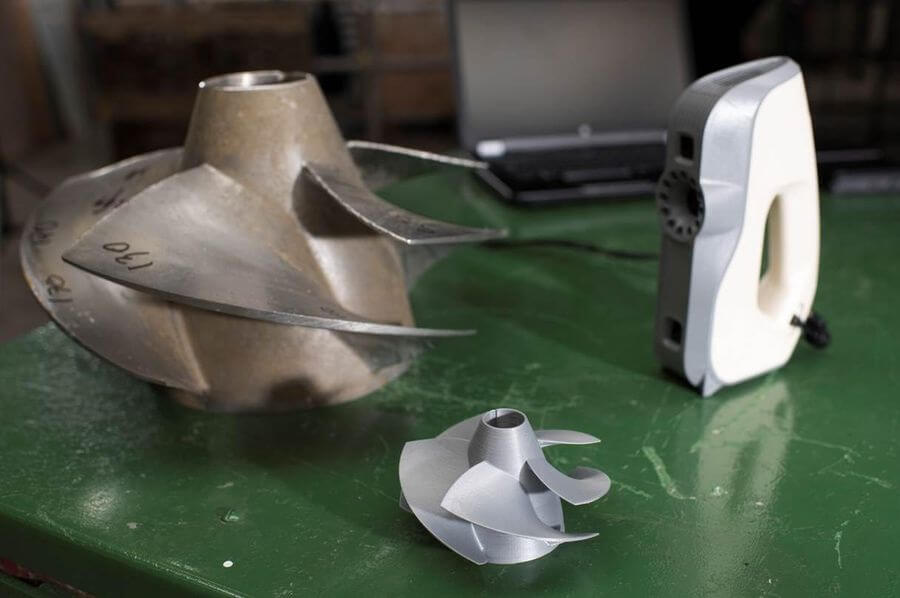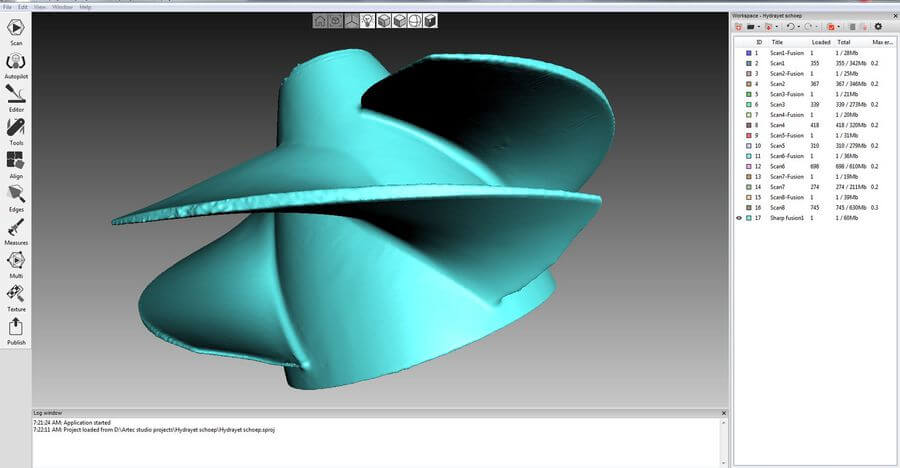Artec 3D scanners saved time and money for Marinebedrijf Koninklijke Marine when servicing Royal Netherlands Navy vessels.
What’s the option for creating parts, when there are no drawings available? The answer is, of course, 3D scanning. The technology was recently very useful for Dutch organisation Marinebedrijf Koninklijke Marine.
The organisation is in charge of maintaining the Royal Netherlands Navy vessels and submarines. And also for creating new parts for the ships. But this responsibility is complex, and often requires hefty reverse engineering work. This is because the organization is in charge of everything from modifying on-board components, to repairing weapons systems and engines.
Naturally, this is a lengthy process. So in order to quicken the pace, Marinebedrijf Koninklijke Marine turned to Artec 3D. The developer and manufacturer of 3D scanning hardware and software provided Artec Eva and Spider 3D hand-held structured light scanners. By doing this, the team were able to produce 3D CAD files and detailed drawings of parts which needed replacing.
“We’re able to use an Artec 3D scanner to create a 3D image of the object, and the scan is used to reverse engineer the object. That part is then replicated using 3D printing techniques, 3-5 axis milling or 3D welding.”
“Using 3D scanning has saved us up to weeks of work – older processes were very intensive requiring multiple types of measuring tools and then replicating the drawing into a CAD programme,” explains Ben Jansen, CNC coordinator at Marinebedrijf Koninklijke Marine.
“Now, even when there is no 3D data or drawings of a part, we’re able to use an Artec 3D scanner to create a 3D image of the object, and the scan is used to reverse engineer the object. That part is then replicated using 3D printing techniques, 3-5 axis milling or 3D welding.”

Creating Parts for the Royal Netherlands Navy
In order to create a 3D digital model, the Artec 3D scanners project light in a grid pattern onto an object. This way, they can capture the distortion or deformation of a part from many angles. Then, using triangulation, they calculate the distance to specific points on the object.
Without this technology, the reverse engineering process would have required many measurements and a lot of time. For cases where navy vessels are so old that suppliers don’t exist anymore, Marinebedrijf Koninklijke Marine could save weeks.
However, this isn’t the only use for Artec 3D. The company has many plans in the pipeline, including 3D printing.
“For large, sea-based vessels, this will really be an ideal solution – it will be far quicker than waiting for replacement parts to be sent from the repair base.”
“For large, sea-based vessels, this will really be an ideal solution – it will be far quicker than waiting for replacement parts to be sent from the repair base,” says Andrei Vakulenko, chief business development officer at Artec 3D.
“At the moment, quite a few small parts can be 3D printed in durable plastic and used with great success, but the real breakthrough will come when 3D printers can achieve the same level of quality in metal.”
Source: Naval Technology

License: The text of "Scanning Royal Netherlands Navy Vessels for Easier Repairs" by All3DP is licensed under a Creative Commons Attribution 4.0 International License.